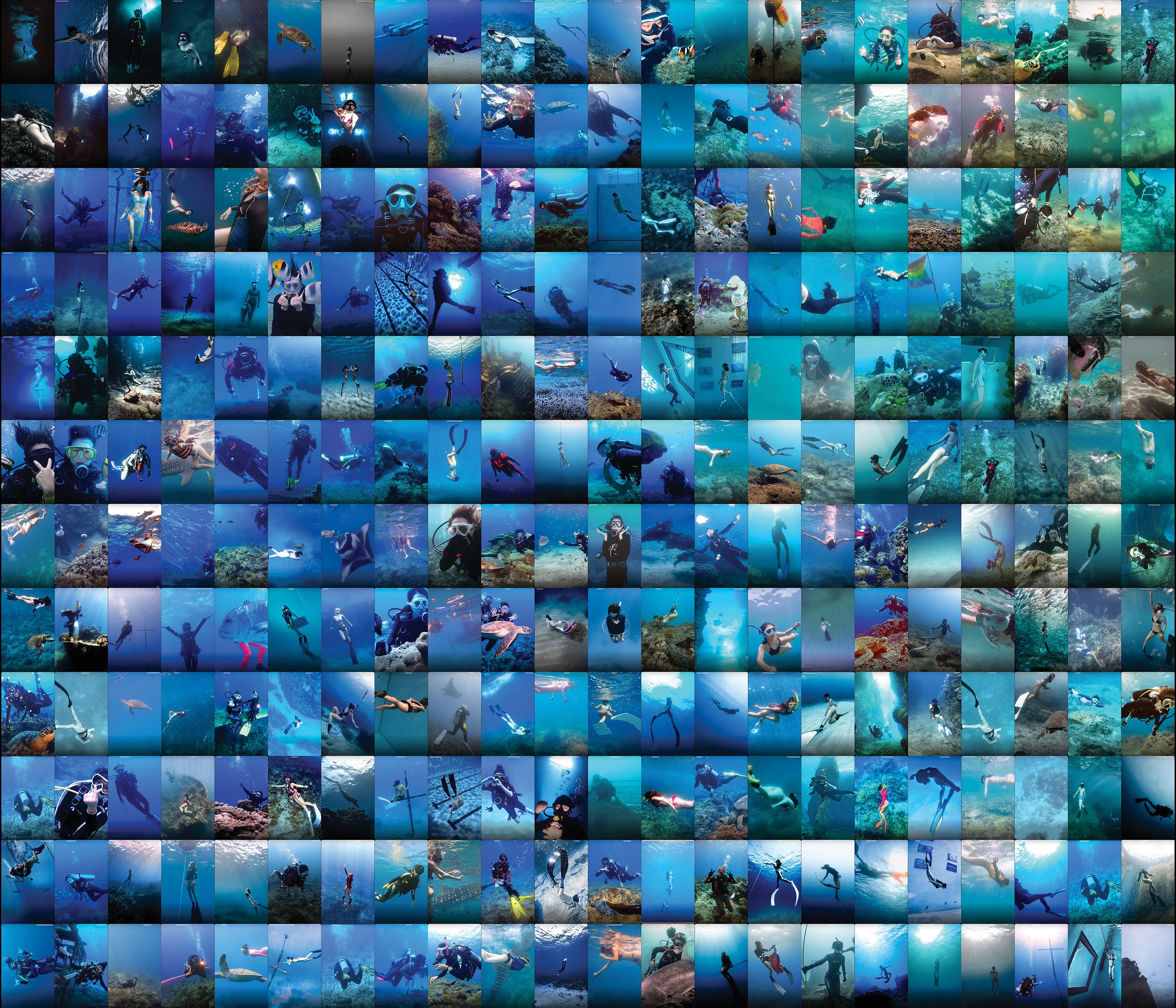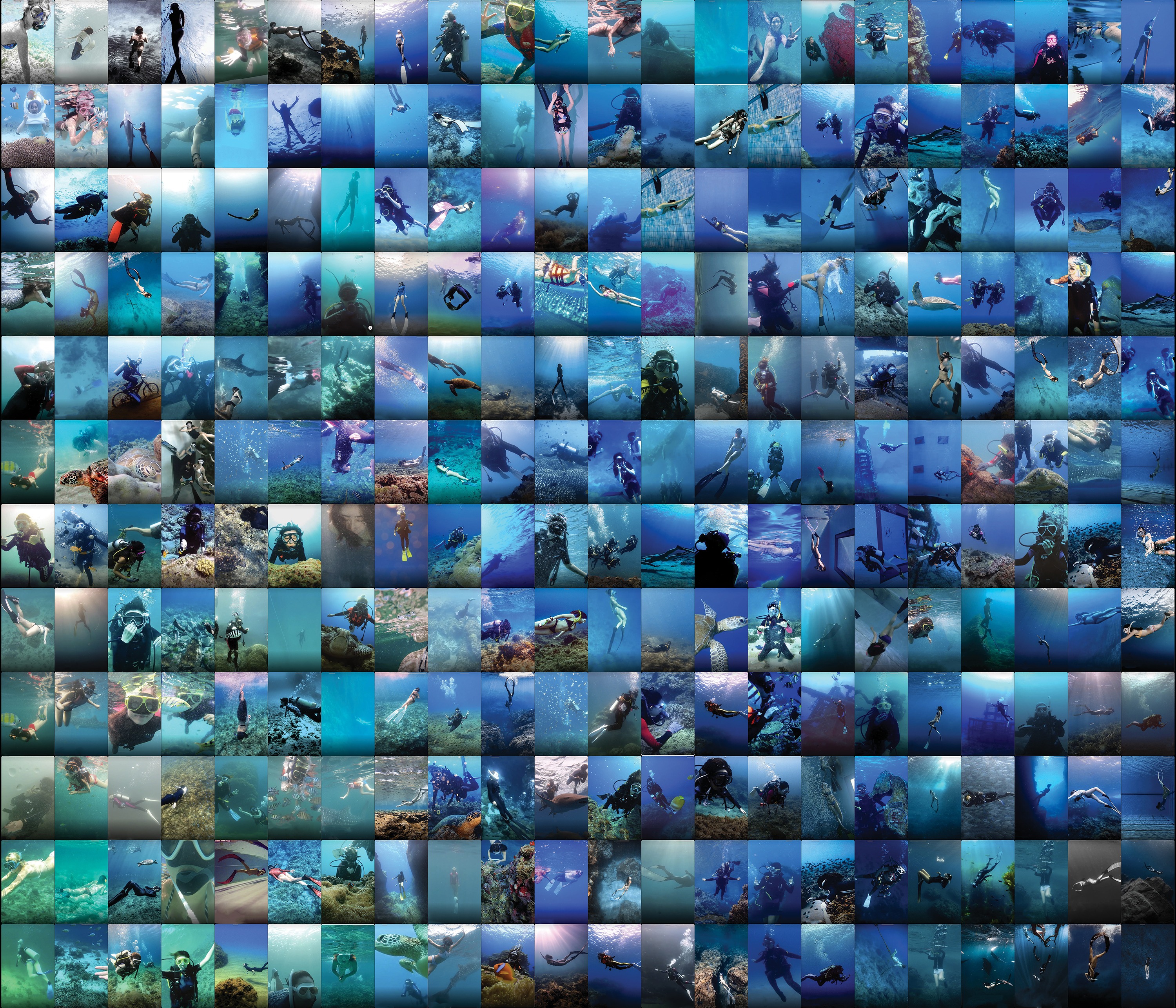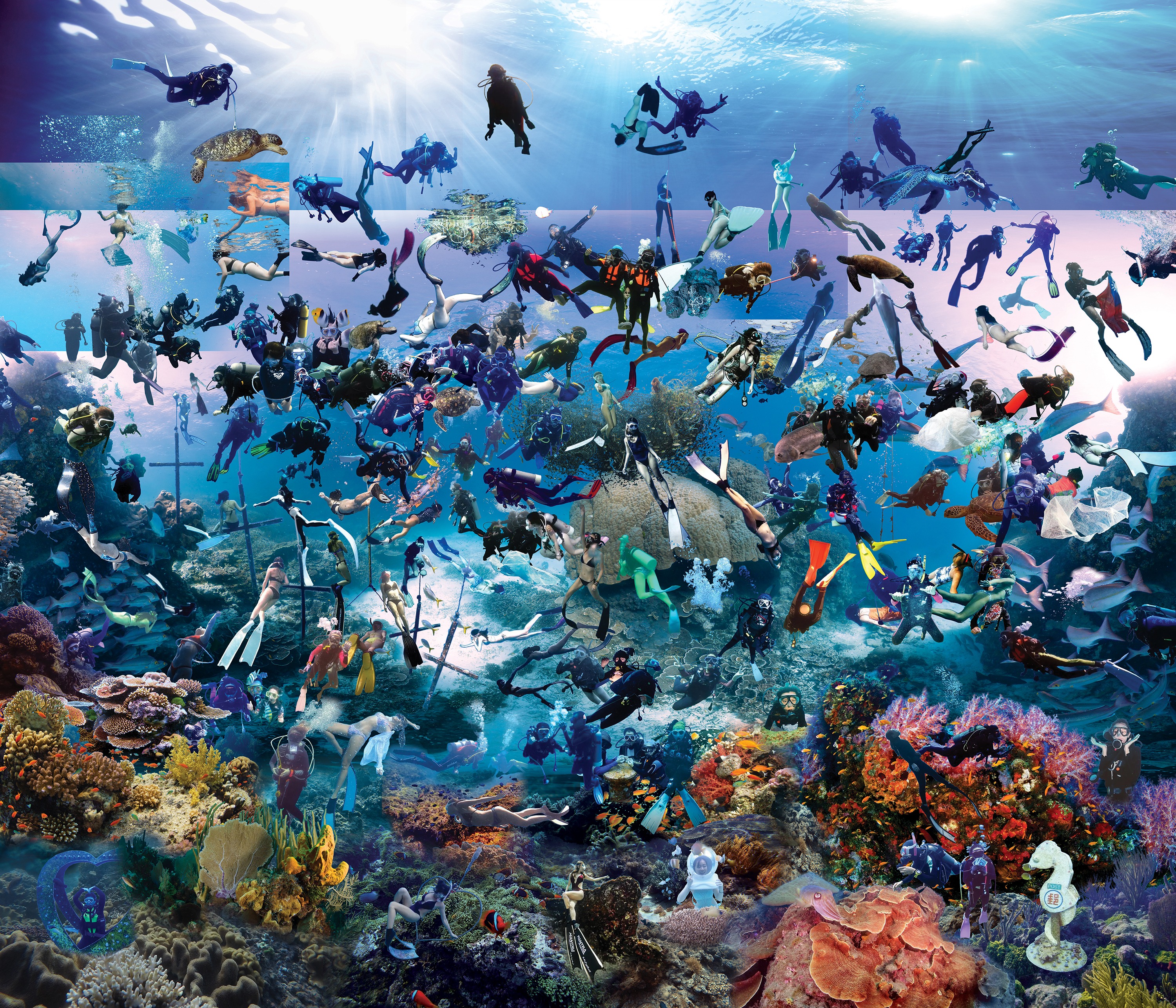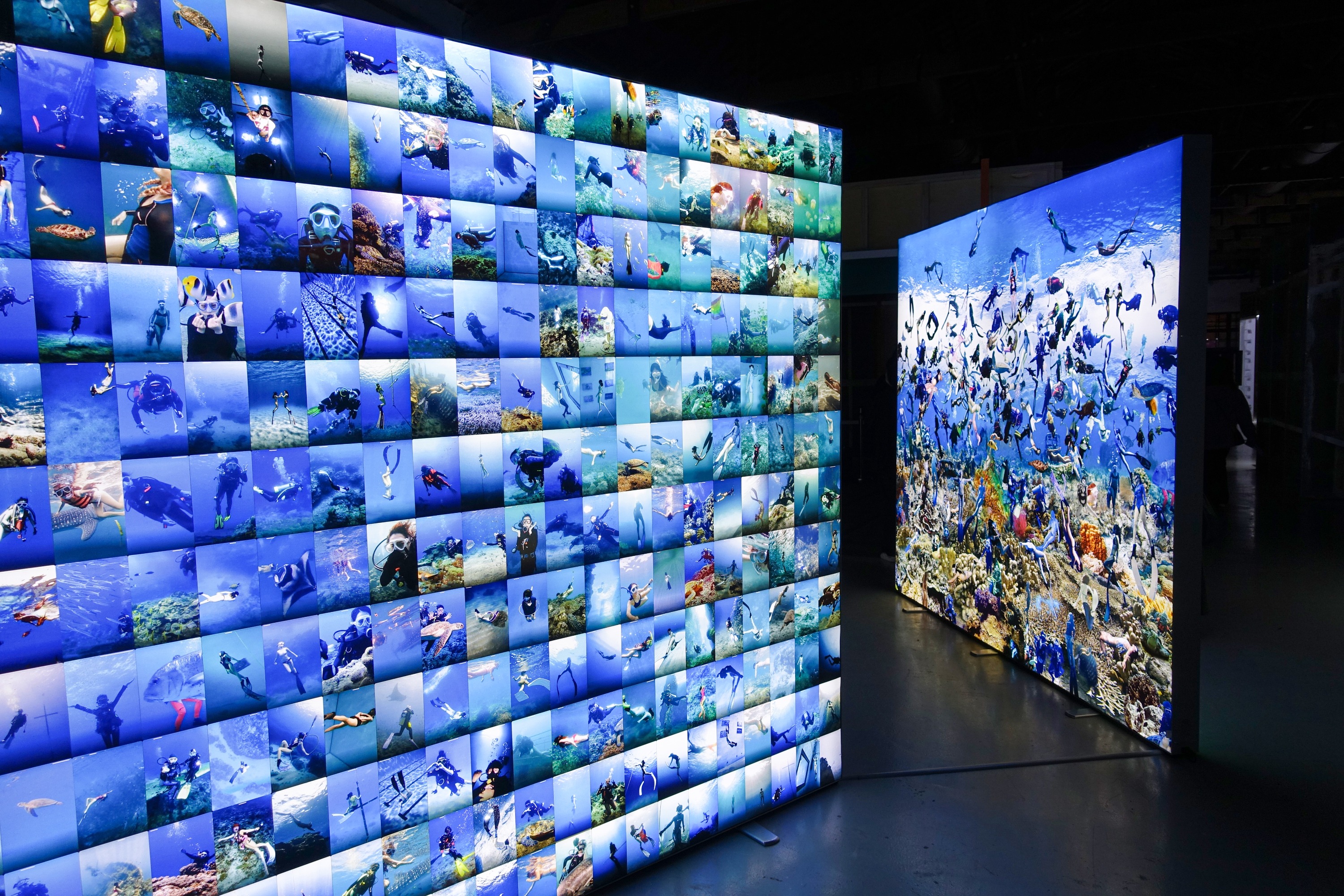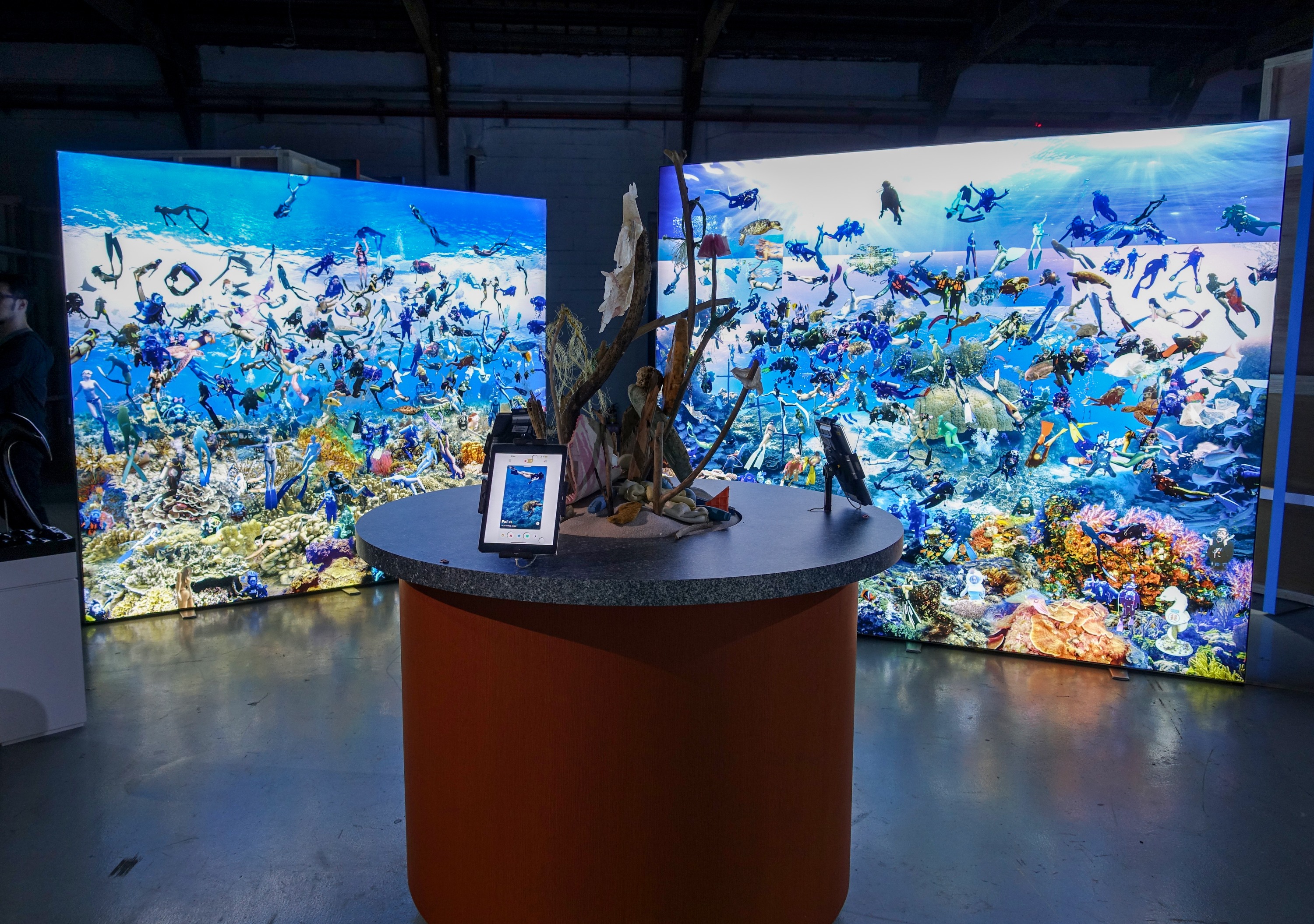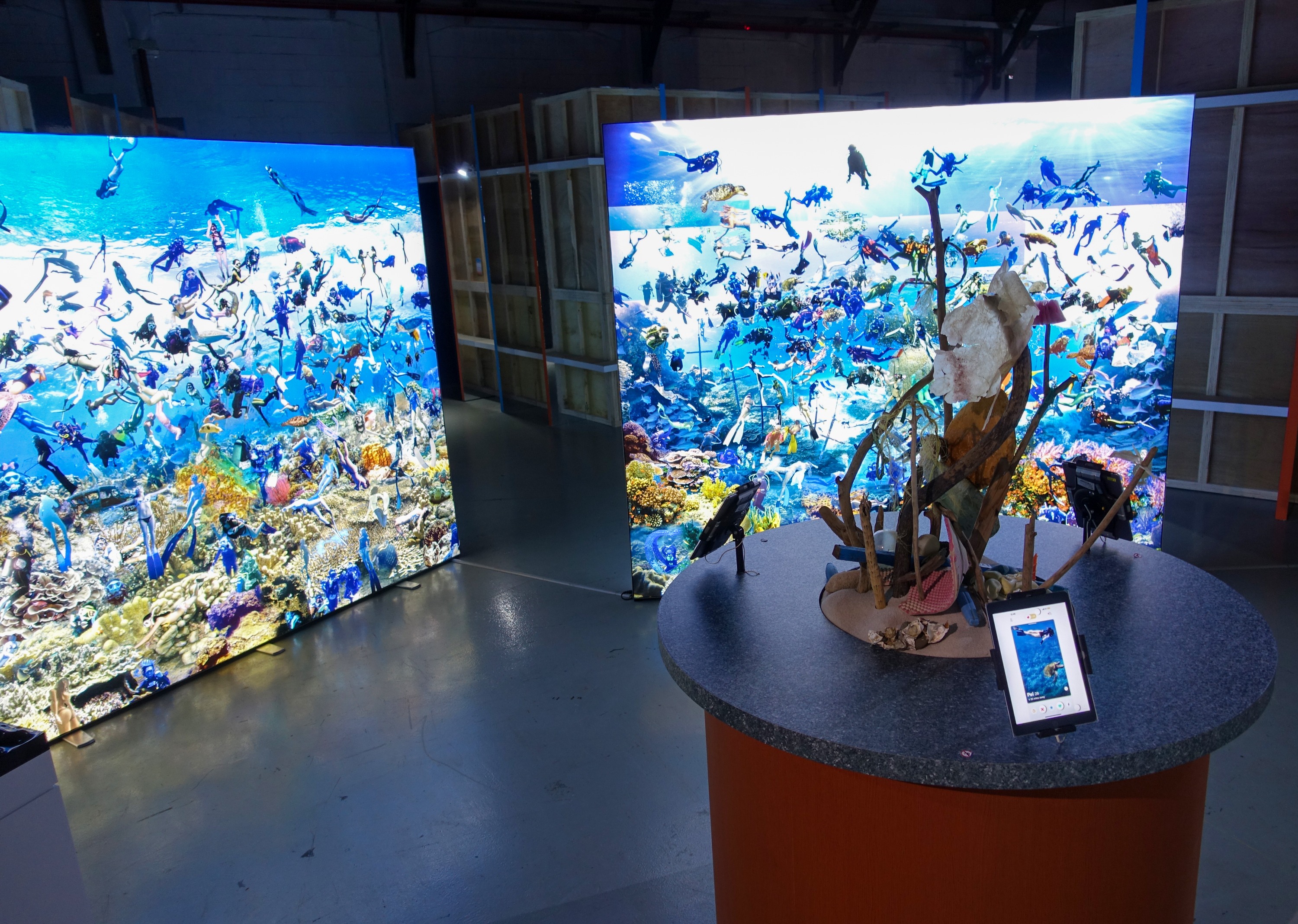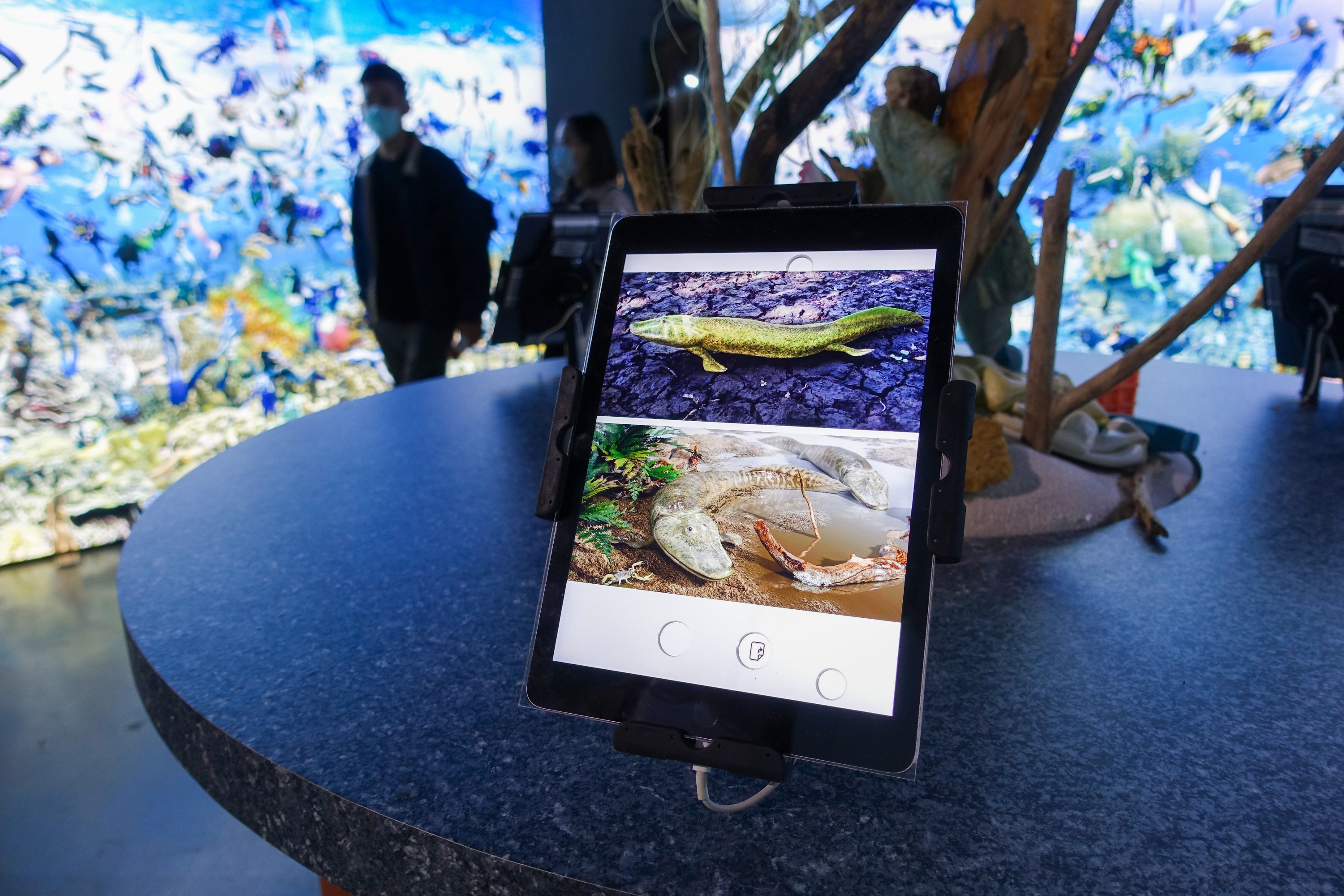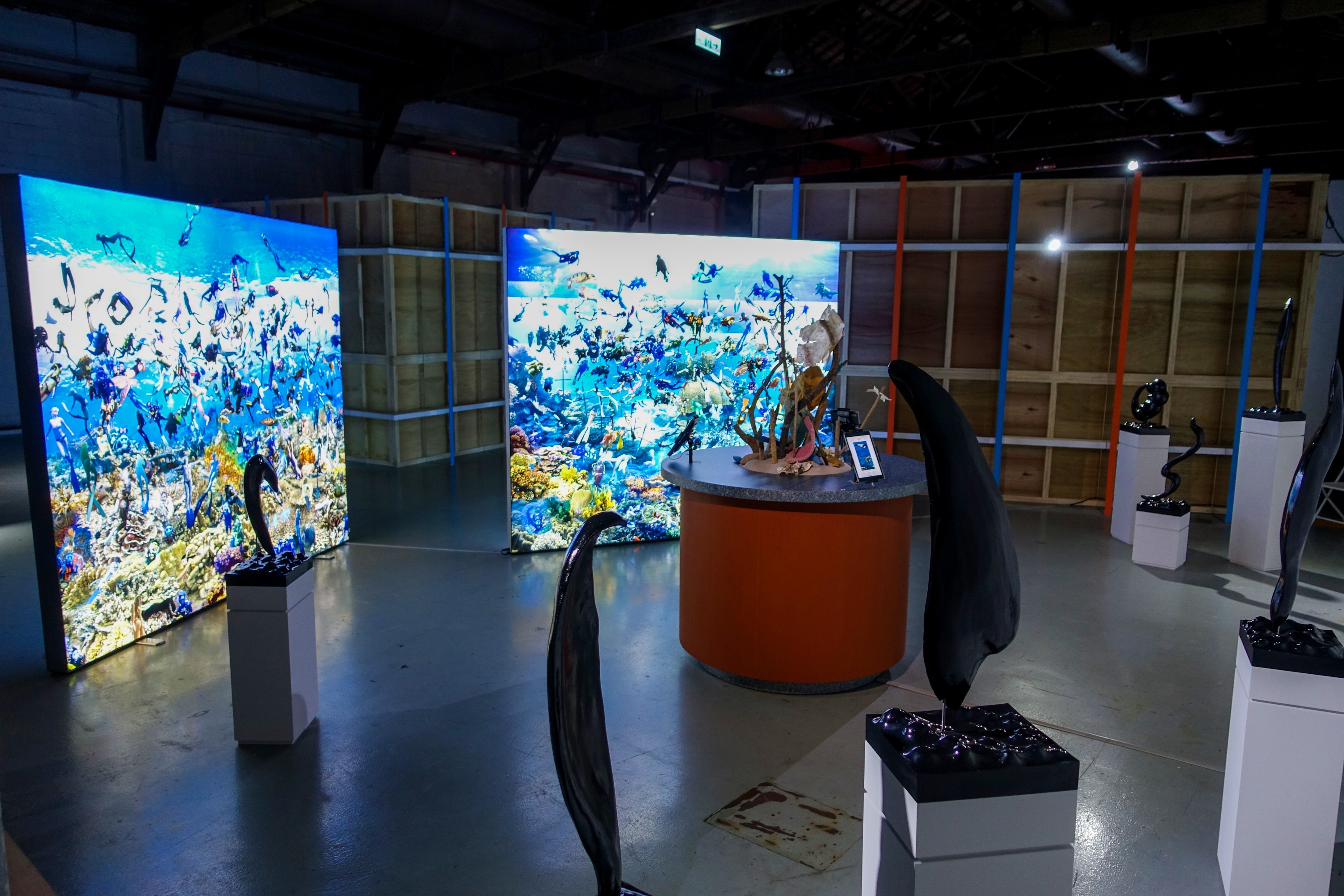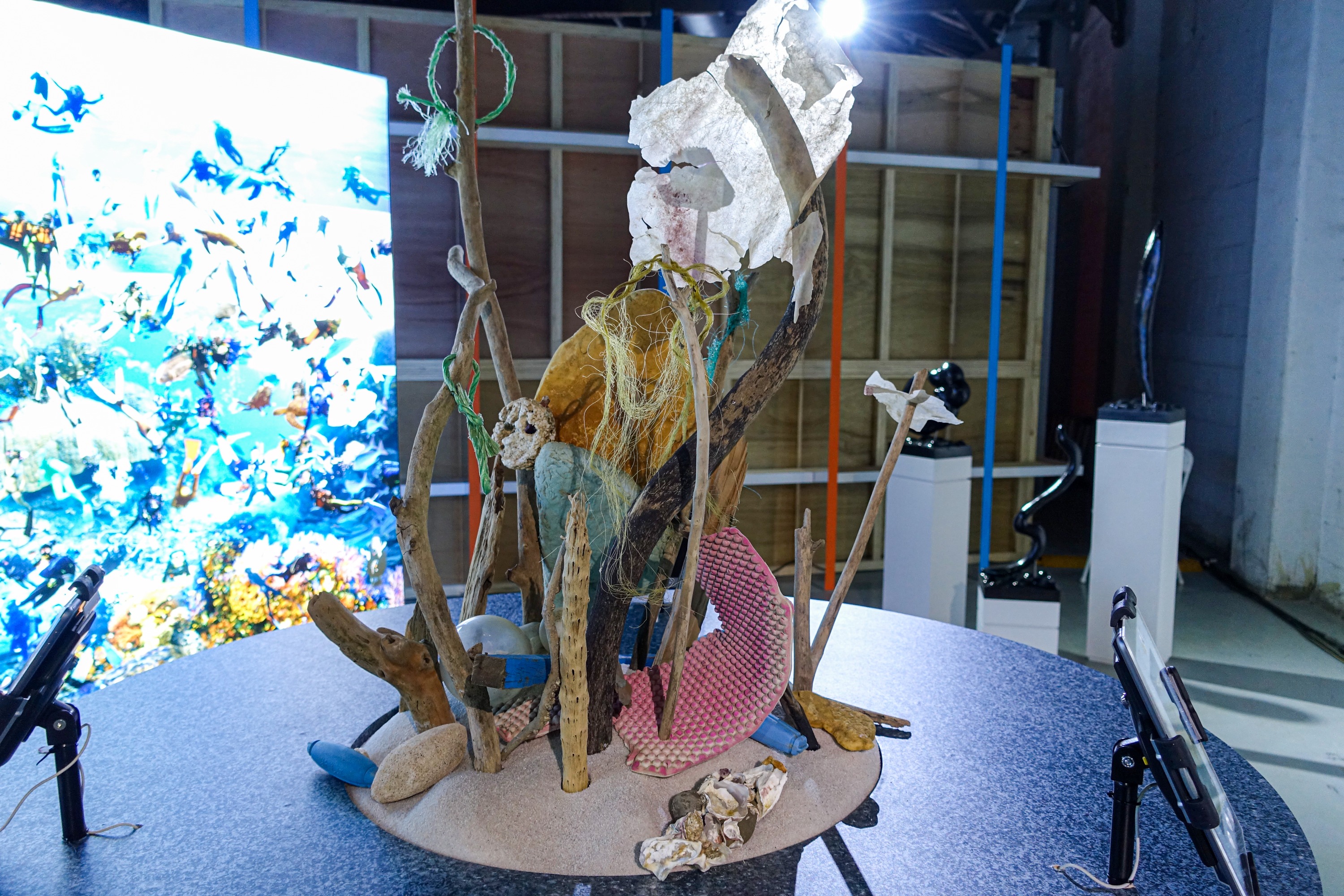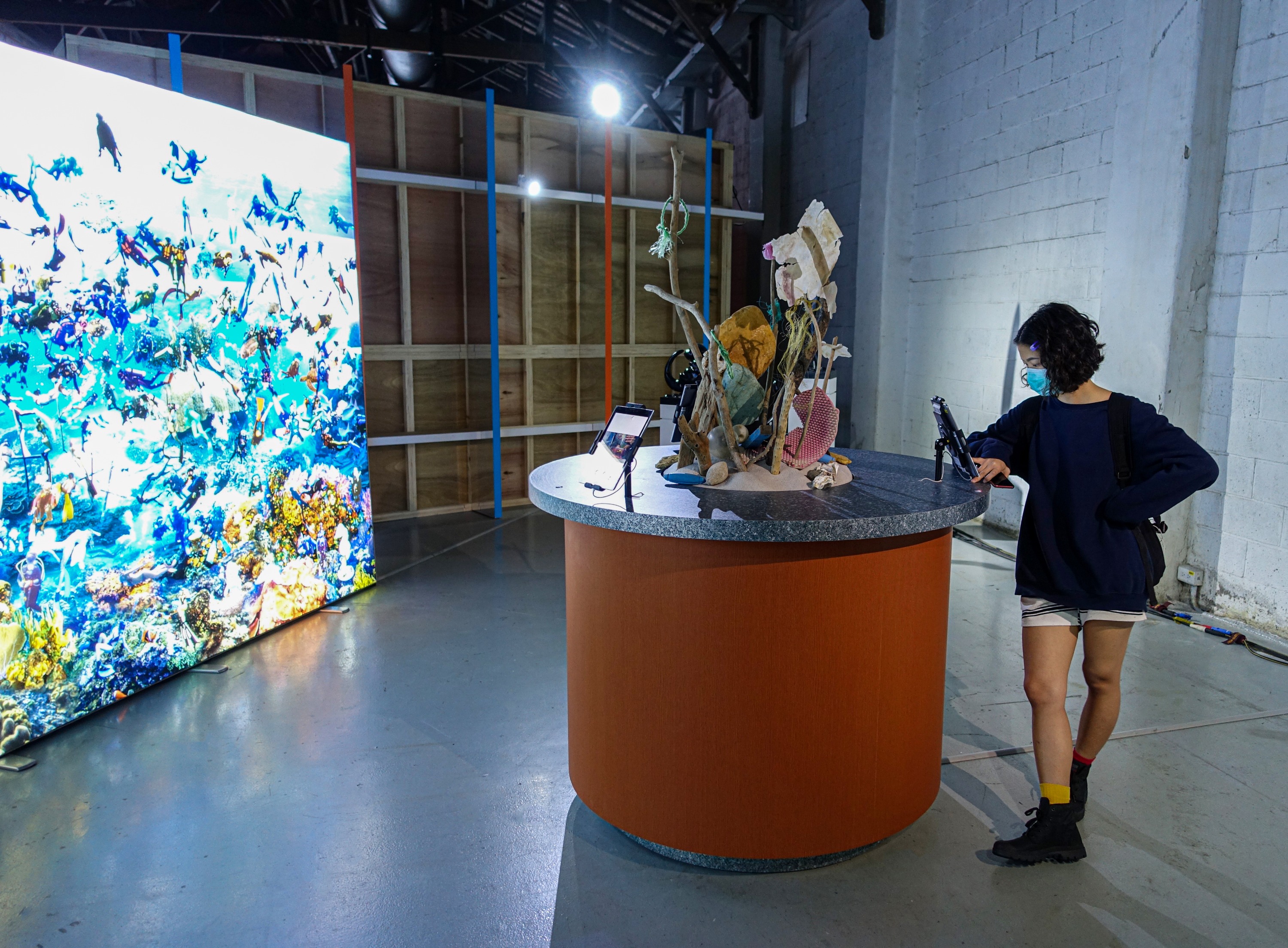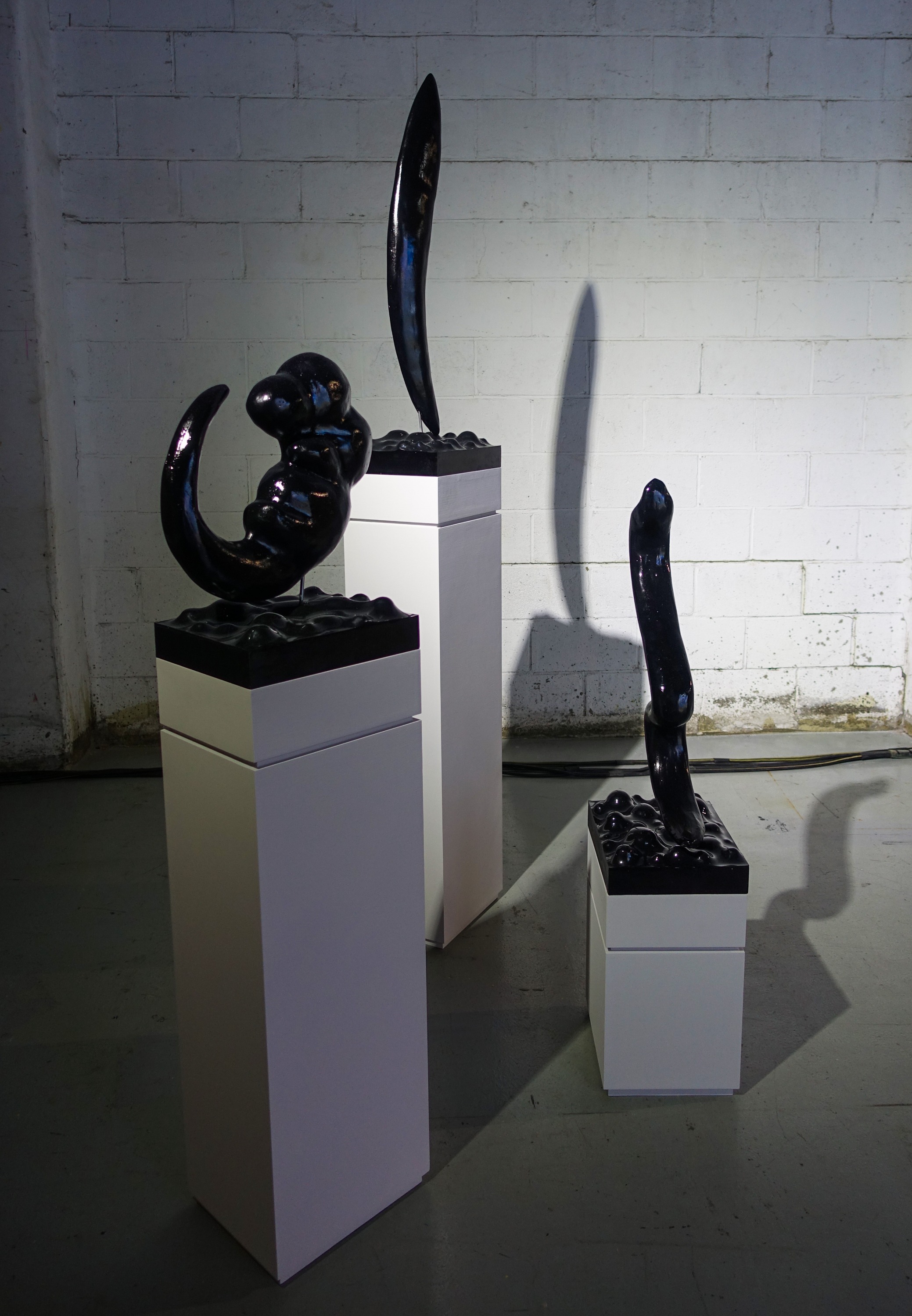Thalassophilia
(comissioned by the Digital Art Festival Taipei)
2020
tinder photos collected in Taiwan, photoshopped and printed on LED lightboxes; Interactive slide shows on Ipads; laminated wooden table; assemblage sculpture made from debris collected from local beach; painted plaster sculptures and vacum formed platforms on pedestals.
lightbox: 280cm x 240cm x 10cm each
table: approximately 220cm x 140cm x 140cm
sculptures size variable
As a heterosexual male Tinder user in Taiwan, I started to notice that within this past two years, there are more and more women using scuba diving and snorkeling photos on their profiles as a way to introduce themselves to strangers. Fascinated with this phenomenon, I started to screenshot these profile photos in an attempt to understand why.
Upon investigation, I realized that the decisions for people to return to the sea is not only an ecological one, but also an evolutionary and a deeply political choice. Throughout the evolution process of living organisms, many animals once evolved from the sea had devolutioned back into sea-dwelling creatures due to various environmental reasons. For the past thousands of years, human beings have also become accustomed to the sea and ocean for food, profit, and conquest. During the age of colonialism and race to modernity, many countries that had once closed off their shores had to re-embrace the ocean to survive in the age of globalization. Finally, considering the current states of geopolitics and environmental crisis, it is perhaps only reasonable for humans to head back into the sea again.
In this project, the duality and opposition of the land and sea is explored in two large-scale photo collages and an interactive digital booth. Hundreds of Tinder profile photos of people diving and snorkeling that I have collected through time are individually cut out and composed into various large-scale seascapes. In addition, audiences are welcome to access the touchscreen tablet kiosks to swipe through the original Tinder profiles of all the divers and snorkelers to reveal two journeys made up of research materials: one that progresses towards the ocean, and the other one towards the land.
海戀
(台北數位藝術節委託製作)
2020
台灣收集的女性 Tinder 個人照, photoshop 後印製 LED 燈上; 互動式 Ipad 幻燈片; 貼皮木桌; 當地海邊收集廢物後做成的集合雕塑; 上過色的石膏雕塑和真空成型製作的基座裝在平台上.
燈箱每座: 280cm x 240cm x 10cm
桌子: 大約 220cm x 140cm x 140cm
尺寸依場地而定
作為台灣直男的Tinder用戶,我開始注意到在過去的兩年中,越來越多的女性使用潛水和浮潛照片作為自己向陌生人推銷的方式。我因為對這種現象感到有興趣,所以開始截圖和收集這些個人照片,以試圖了解這現象的原因。
經過調查和研究,我意識到,讓人們返回大海的決定不僅是和生態有關,而且是一種進化和政治的選擇。在世界上生物的整個進化過程中,由於各種環境原因,許多曾經從海洋進化而來的動物已進化回海洋生物。在過去的幾千年中,人類已經習慣了以海洋為食,征服海洋和從中取利。在殖民主義時代和走向現代的競賽中,許多曾經封閉海岸的國家不得不重新融入海洋,以在全球化時代生存。最後,考慮到當前的地緣政治和環境危機,對於人類而言,再次回到大海也許是最合理的。
在這個計畫裡,觀眾通過兩個大型照片拼貼和一個互動的數位攤位,探索陸地和海洋的雙重性和對立性。我長時間收集的數百張的 Tinder 潛水和浮潛照片將被剪貼組成大型海景圖。此外,觀眾也可探索數位攤位的互動平板電腦信息亭,像使用 Tinder 般滑動所有潛水者和浮潛者的原始的Tinder 個人資料,以揭示由研究材料構成的兩個旅程:一個是向海洋前進,另一個是向陸地前進。
